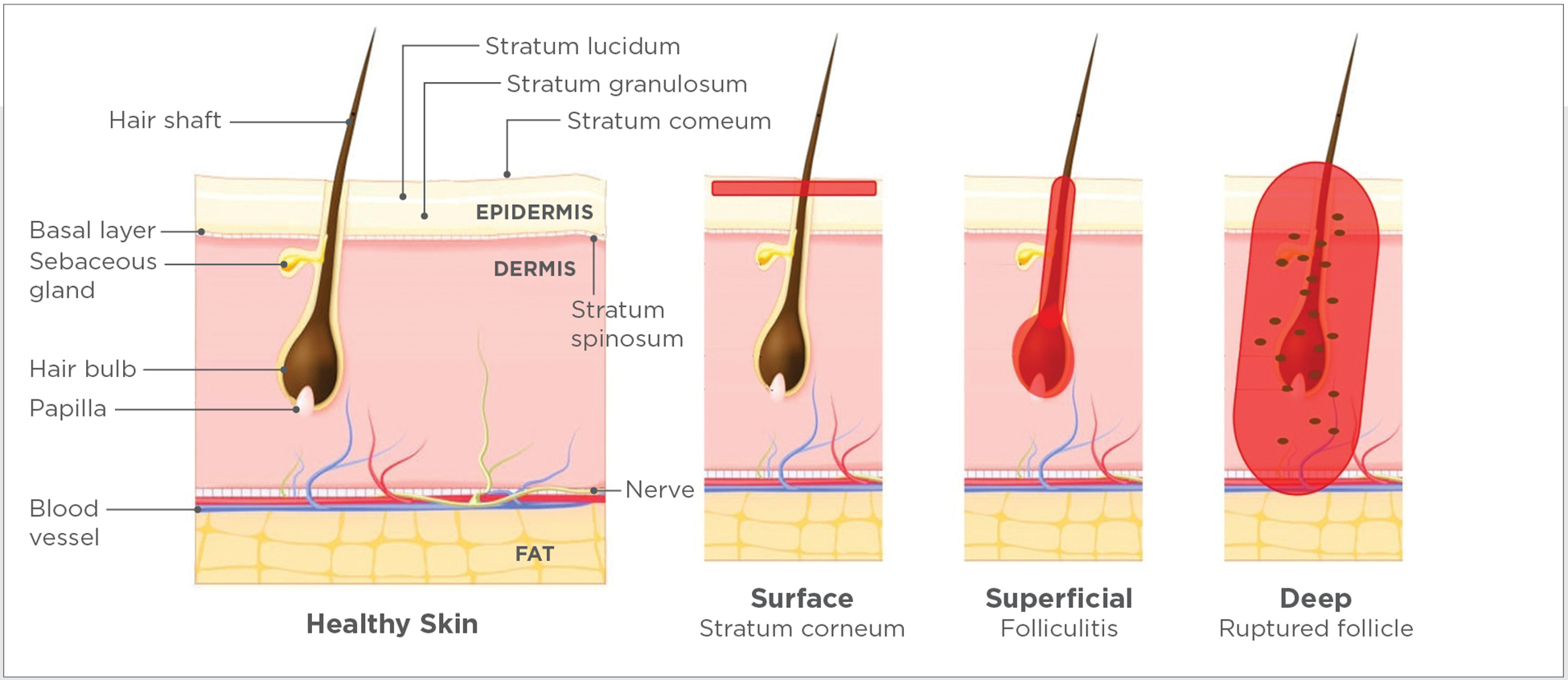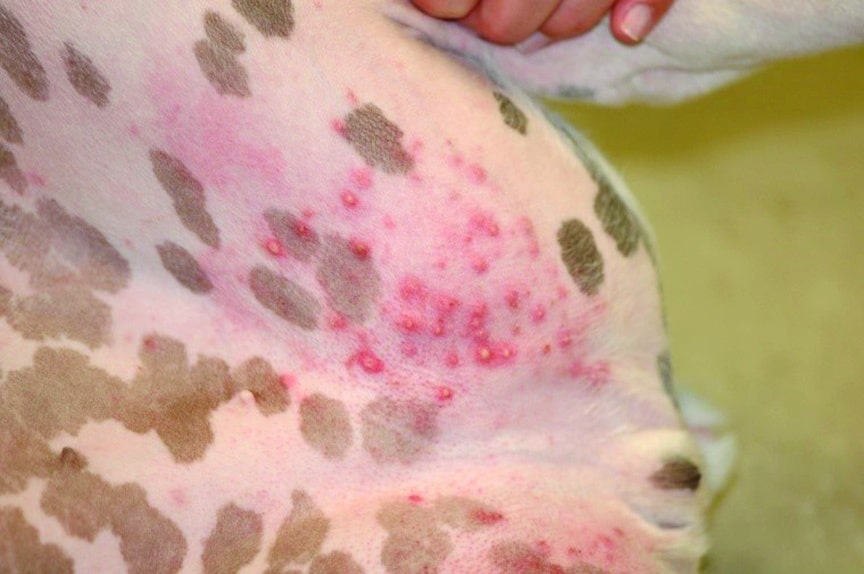Superficial bacterial pyoderma in dogs
Our beloved canine companions bring joy, laughter, and love into our lives. However, just like humans, dogs can suffer from various health issues, including skin conditions. Superficial bacterial pyoderma is one such common skin problem that affects dogs.
In this article, Emma explains what pyoderma is, how to diagnose and treat it, and most importantly, how to prevent it to keep your furry friend healthy and happy.
What is superficial bacterial pyoderma?
Pyoderma is a skin infection that primarily affects the surface layers of a dog’s skin. This condition is caused by bacterial invaders, usually staphylococcus intermedius, which find their way into your dog’s skin through small cuts, scratches, or inflamed hair follicles.
Superficial bacterial pyoderma in dogs is typically considered harmless, but it is almost always a symptom of an underlying disease. If the underlying disease is not identified and the infection is left untreated, it can become deep pyoderma, which is much harder to treat.

Source: https://todaysveterinarynurse.com/dermatology/pyoderma-in-the-dog/
Symptoms of pyoderma
Identifying pyoderma early is crucial for effective treatment. Common symptoms of pyoderma in dogs include:
- Redness and Inflammation: The affected area may appear red, swollen, and irritated.
- Pustules and Pimples: Small, pus-filled pustules or pimples may develop, which can burst and ooze.
- Hair Loss: Dogs with pyoderma may scratch so much that they rip out hair in the infected areas, leading to bald patches.
- Itching and Discomfort: Affected dogs often itch, scratch, or lick the infected areas due to discomfort.
- Unpleasant Odour: A foul odour can emanate from the infected skin.
This is what pyoderma looks like

Source: https://todaysveterinarynurse.com/dermatology/pyoderma-in-the-dog/
So, how does an animal develop pyoderma?
Cause of pyoderma
Pyoderma is initiated when the normal bacteria living on the surface of the skin gain access to the deeper layers, usually because of small cuts/breaks in the skin barrier caused by SCRATCHING. Therefore, any condition which causes your pet to be itchy can cause pyoderma. Also, animals with a weakened immune system are more prone to developing this condition, for instance young puppies that have recently weaned and geriatric animals.
Skin problems like parasite infestation, atopic dermatitis, flea allergies, or food sensitivities and certain physical characteristics, like the skin folds in Shar Peis, Bullmastiffs, and English Bulldogs will make your pet more prone to developing pyoderma too. Insufficient grooming or environmental factors can also cause itchiness leading to pyoderma.
Bacterial pyoderma is classified as either surface, superficial, or deep. Surface infections involve only the very top layer of the skin (stratum corneum), superficial infections involve only the epidermis and hair follicles, while deep ones affect the dermis, deep dermis, and can lead to furunculosis (deep pus-filled boils and draining tracts). Diagnosing pyoderma is easy, but diagnosing the multitude of underlying conditions that can potentially lead to pyoderma is a lot more complex.
Keep in mind that superficial bacterial pyoderma is not an allergy, but can be a secondary symptom of allergies. Find out more about allergies in Dr. Lauren’s blog article: https://vslveterinary.com/dog-allergies-atopic-dermatitis/
Transmission of pyoderma
Pyoderma cannot be passed directly from one person or pet to another, but the bacteria causing it can potentially spread among people or animals living together in the same home.
So, what does the treatment of pyoderma look like?
Treatment of pyoderma
Treating pyoderma involves both medical intervention and supportive care. Here’s how to manage this condition:
- Visit your veterinarian: If you suspect your dog has pyoderma, consult your trusted veterinarian promptly. Your vet will perform a physical examination, possibly take skin samples, and may recommend a culture to identify the specific bacteria causing the infection.
- Antibiotics: Antibiotics are the primary treatment for pyoderma. Your vet will prescribe the appropriate antibiotic based on the bacteria causing the infection. It’s crucial to complete the entire course of antibiotics, even if your dog’s symptoms improve before the medication is finished.
- Topical treatments: In addition to oral antibiotics, your vet may suggest topical treatments like medicated shampoos, sprays, or ointments to help manage the infection and reduce itching.
- Cleanliness and hygiene: Keep the infected area clean and dry. Avoid bathing your dog too frequently, as this can strip natural oils from their skin, potentially worsening the condition. Conversely, if your dog has skin folds, these may require more frequent cleaning & drying.
- Prevent scratching: Prevent your dog from scratching, e.g. by using a cone.
A regular vet check can help to keep your beloved furry friend healthy.
Book your dog’s consult
Only $30 + VAT gets you a 30-minute consult with an international vet, a thorough physical exam, vaccination/parasite-control check, and expert advice.
- Phone: 023-986-640
- WhatsApp/Telegram: 017-464-681
- Facebook DM: www.facebook.com/vslveterinary
- Email: info@vslveterinary.com
Visit us in BKK1: House #33, St. 334 (corner St. 63)
- Monday – Saturday: 9am – 7pm
- Sunday: 9am – 5pm
